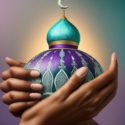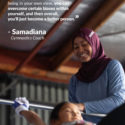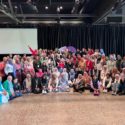Celebrations to mark Matariki and the beginning of the Muslim holy month of Ramadan occurred at roughly the same time in 2016 and provided a group of Muslim children with a great way to use their new-found calligraphy skills.
Muslim calligraphy, the art of writing verses from the Koran in a stylised and painterly fashion, was developed in India in the 17th Century.
During the May school holidays, Auckland’s Umma Trust ran a three-day school holiday programme where up to 20 young people, aged from 3 to 14 years, had a go at using the special oblique tipped Arabic calligraphy pens to express the similarities they saw between Matariki and Ramadan.
Umma Trust Youth Co-ordinator, Naima Ali who helped organise the course said the budding young artists learnt about Matariki at school and could see so much in common with their Muslim traditions.
“They really wanted to celebrate the commonality between the two cultures, to combine something special for us as Muslims with something special in the land we live in,” she said.
E Tū Whānau’s Ann Dysart told the group how shared values, like whānau and aroha could be expressed visually using the strong colours and styles favoured by Māori whānau and widely used in many African and Arabic cultures as well.
You can see the results for yourself in this excerpt from Neighbourhood, Satellite Media’s excellent TV series on community diversity. Many thanks to the producers for the use of this clip.



